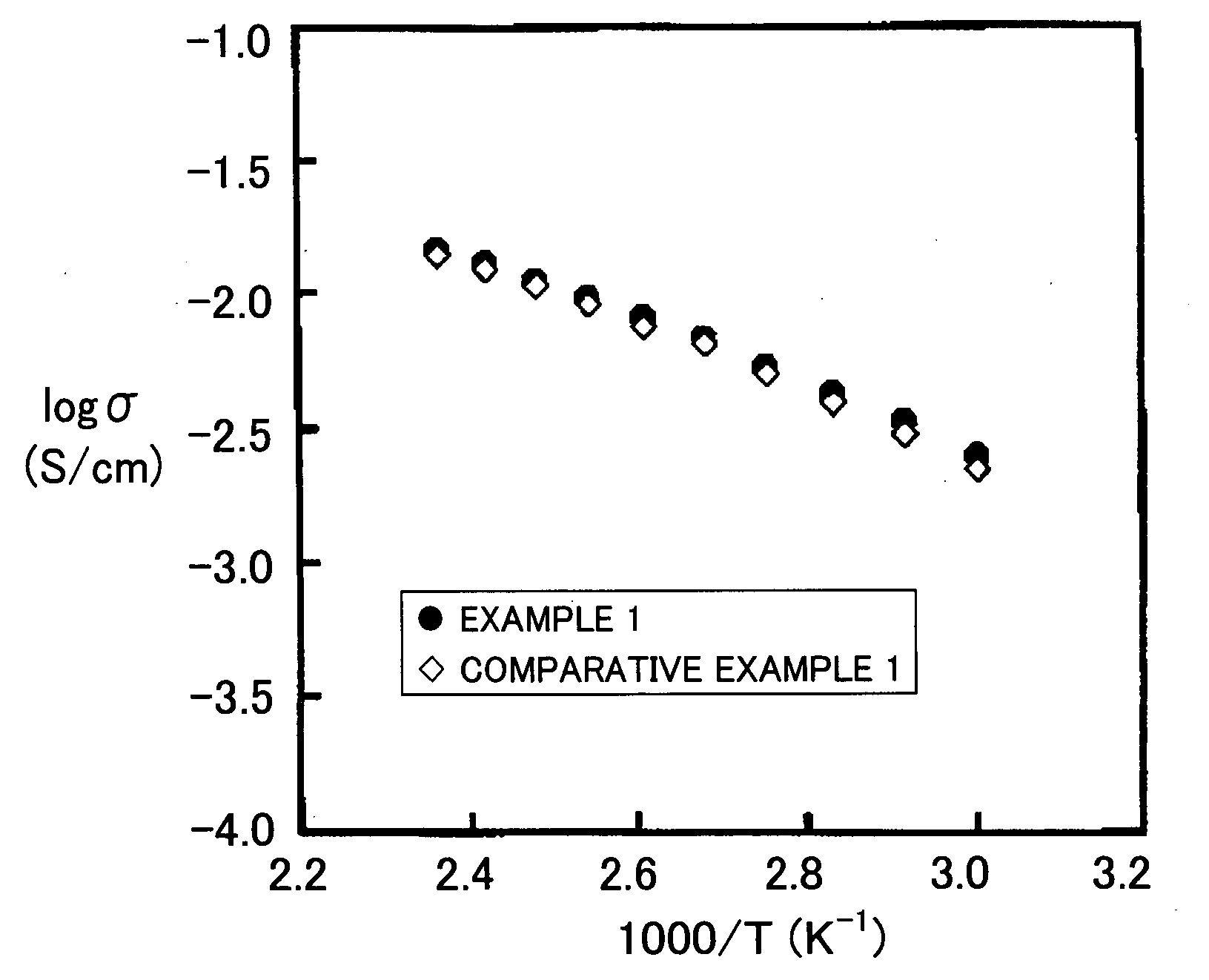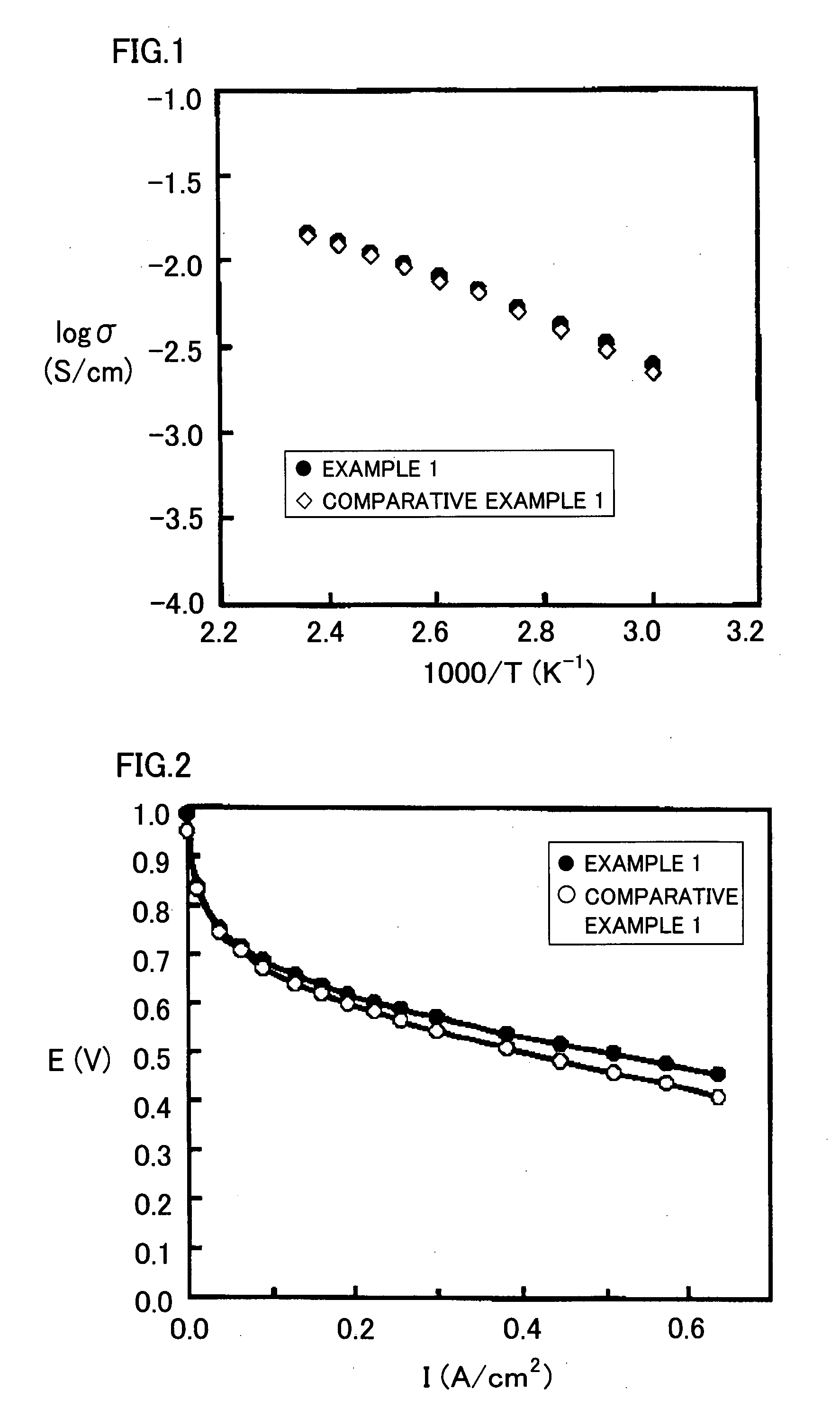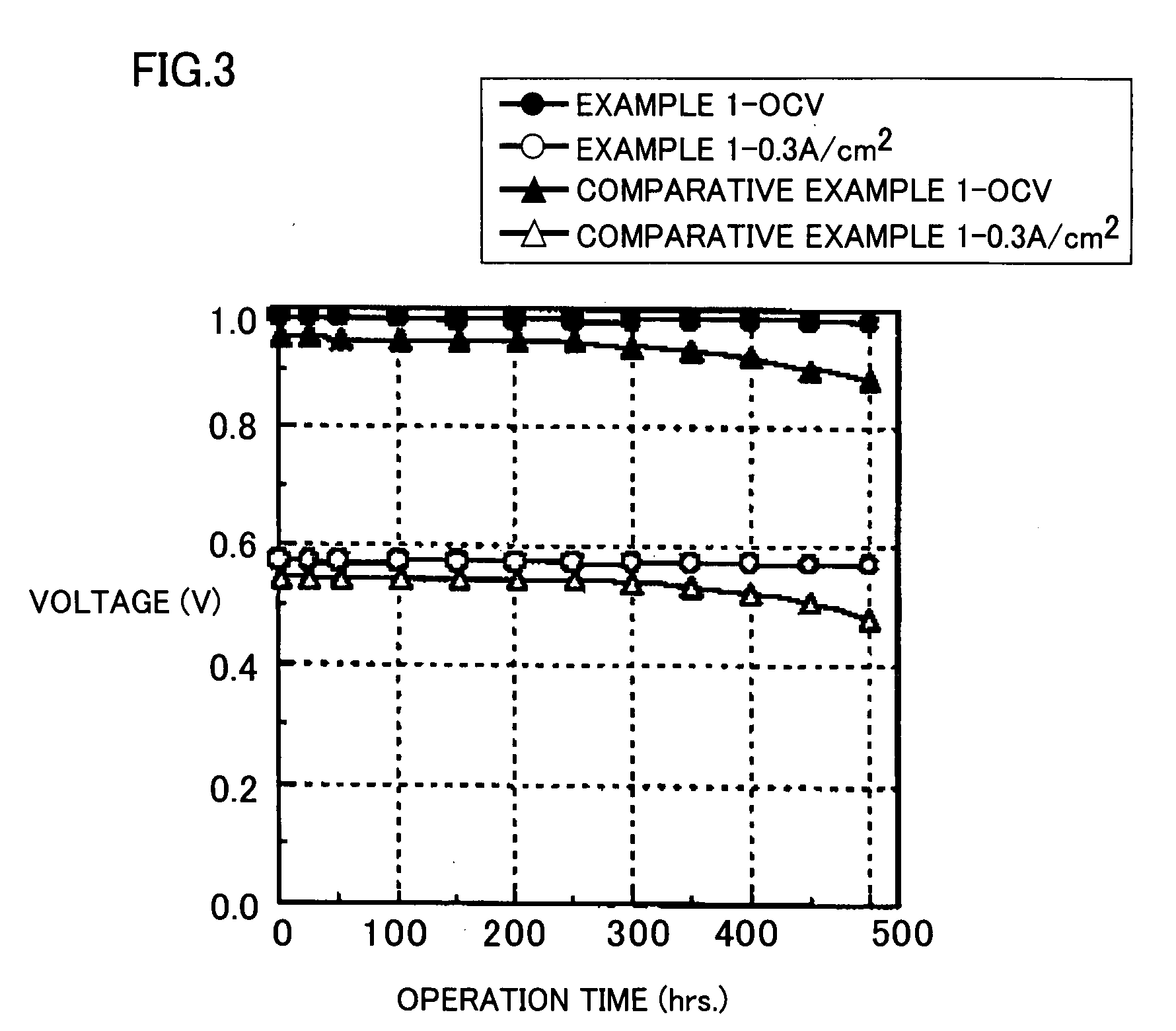Proton Conducting Polymer membrane, Method for Production Thereof and Fuel Cell Therewith
- Summary
- Abstract
- Description
- Claims
- Application Information
AI Technical Summary
Benefits of technology
Problems solved by technology
Method used
Image
Examples
example 1
[0073]In a polymerization vessel were weighed 6.000 g (2.1557×10−2 mol) of 3,3′,4,4′-tetraaminodiphenylsulfone, 5.7812 g (2.1557×10−2 mol) of monosodium 2,5-dicarboxybenzenesulfonate (99% by mass in purity), 52.8 g of polyphosphoric acid (with a phosphorus pentoxide content of 75% by mass), and 43.3 g of phosphorus pentoxide. Under a stream of nitrogen, the mixture was heated to 100° C. with gentle stirring on an oil bath. After held at 100° C. for 1 hour, the mixture was heated to 150° C. and polymerized for 1 hour, and then heated to 200° C. and polymerized for 6 hours. After the polymerization was completed, the product was allowed to stand to cool. Water was added to the product, and the polymerization product was taken out and repeatedly washed with water in a home mixer until the pH became neutral on pH indicator paper. The resulting polymer was dried under reduced pressure at 80° C. overnight. The polymer showed a inherent viscosity of 2.18.
[0074]On an oil bath, 1 g of the re...
example 2
[0077]In a polymerization vessel were weighed 1.830 g (6.575×10−3 mol) of 3,3′,4,4′-tetraaminodiphenylsulfone, 1.084 g (4.405×10−3 mol) of 3,5-dicarboxyphenylphosphonic acid (98% by mass in purity), 0.360 g (2.170×10−3 mol) of terephthalic acid, 24.98 g of polyphosphoric acid (with a phosphorus pentoxide content of 75% by mass), and 20.02 g of phosphorus pentoxide. Under a stream of nitrogen, the mixture was heated to 100° C. with gentle stirring on an oil bath. After held at 100° C. for 1 hour, the mixture was heated to 150° C. and polymerized for 1 hour, and then heated to 200° C. and polymerized for 5 hours. After the polymerization was completed, the product was allowed to stand to cool. Water was added to the product, and the polymerization product was taken out and repeatedly washed with water in a home mixer until the pH became neutral on pH indicator paper. The resulting polymer was dried under reduced pressure at 80° C. overnight. The polymer showed a inherent viscosity of ...
example 3
[0080]In a polymerization vessel were weighed 1.830 g (6.575×10−3 mol) of 3,3′,4,4′-tetraaminodiphenylsulfone, 0.529 g (1.973×10−3 mol) of monosodium 2,5-dicarboxybenzenesulfonate (99% by mass in purity), 1.133 g (4.602×10−3 mol) of 3,5-dicarboxyphenylphosphonic acid (98% by mass in purity), 24.98 g of polyphosphoric acid (with a phosphorus pentoxide content of 75% by mass), and 20.02 g of phosphorus pentoxide. Under a stream of nitrogen, the mixture was heated to 100° C. with gentle stirring on an oil bath. After held at 100° C. for 1 hour, the mixture was heated to 150° C. and polymerized for 1 hour, and then heated to 200° C. and polymerized for 5 hours. After the polymerization was completed, the product was allowed to stand to cool. Water was added to the product, and the polymerization product was taken out and repeatedly washed with water in a home mixer until the pH became neutral on pH indicator paper. The resulting polymer was dried under reduced pressure at 80° C. overnig...
PUM
| Property | Measurement | Unit |
|---|---|---|
| Percent by mass | aaaaa | aaaaa |
| Percent by mass | aaaaa | aaaaa |
| Temperature | aaaaa | aaaaa |
Abstract
Description
Claims
Application Information
 Login to View More
Login to View More - R&D
- Intellectual Property
- Life Sciences
- Materials
- Tech Scout
- Unparalleled Data Quality
- Higher Quality Content
- 60% Fewer Hallucinations
Browse by: Latest US Patents, China's latest patents, Technical Efficacy Thesaurus, Application Domain, Technology Topic, Popular Technical Reports.
© 2025 PatSnap. All rights reserved.Legal|Privacy policy|Modern Slavery Act Transparency Statement|Sitemap|About US| Contact US: help@patsnap.com



